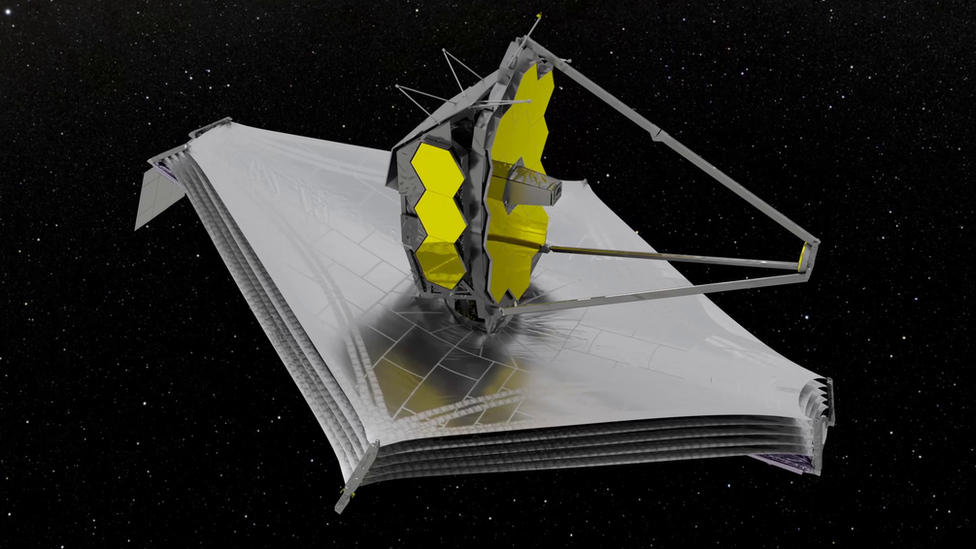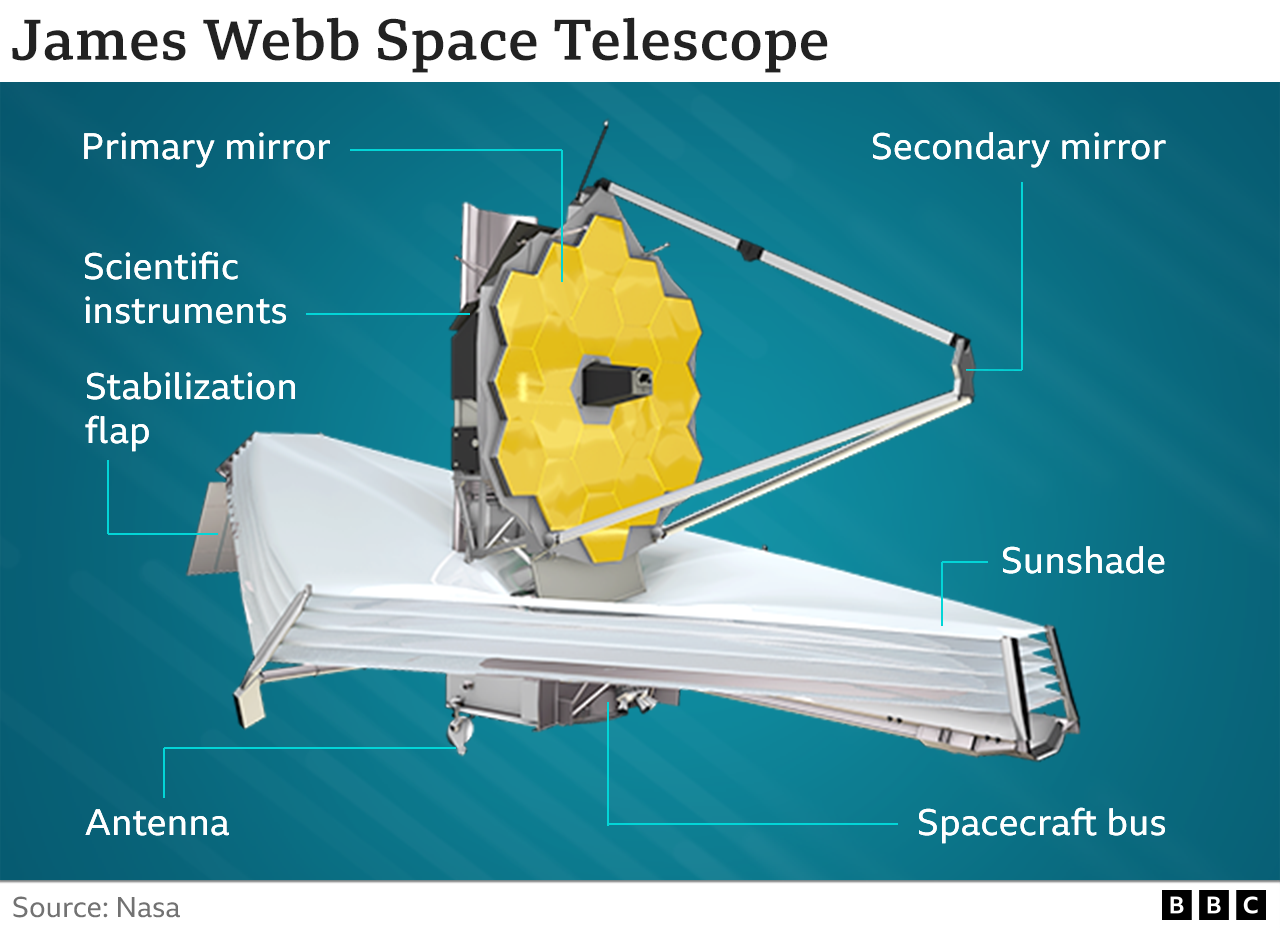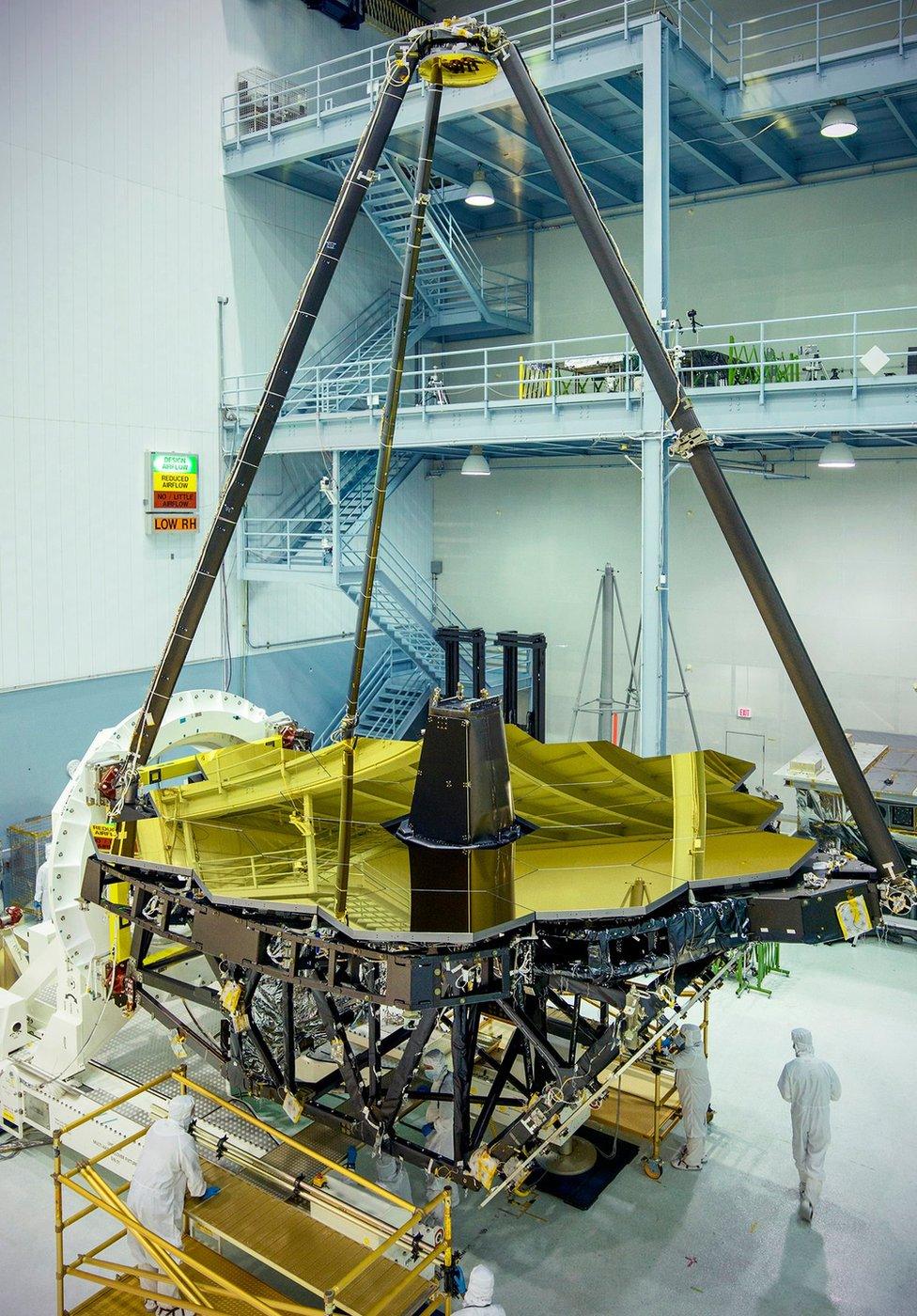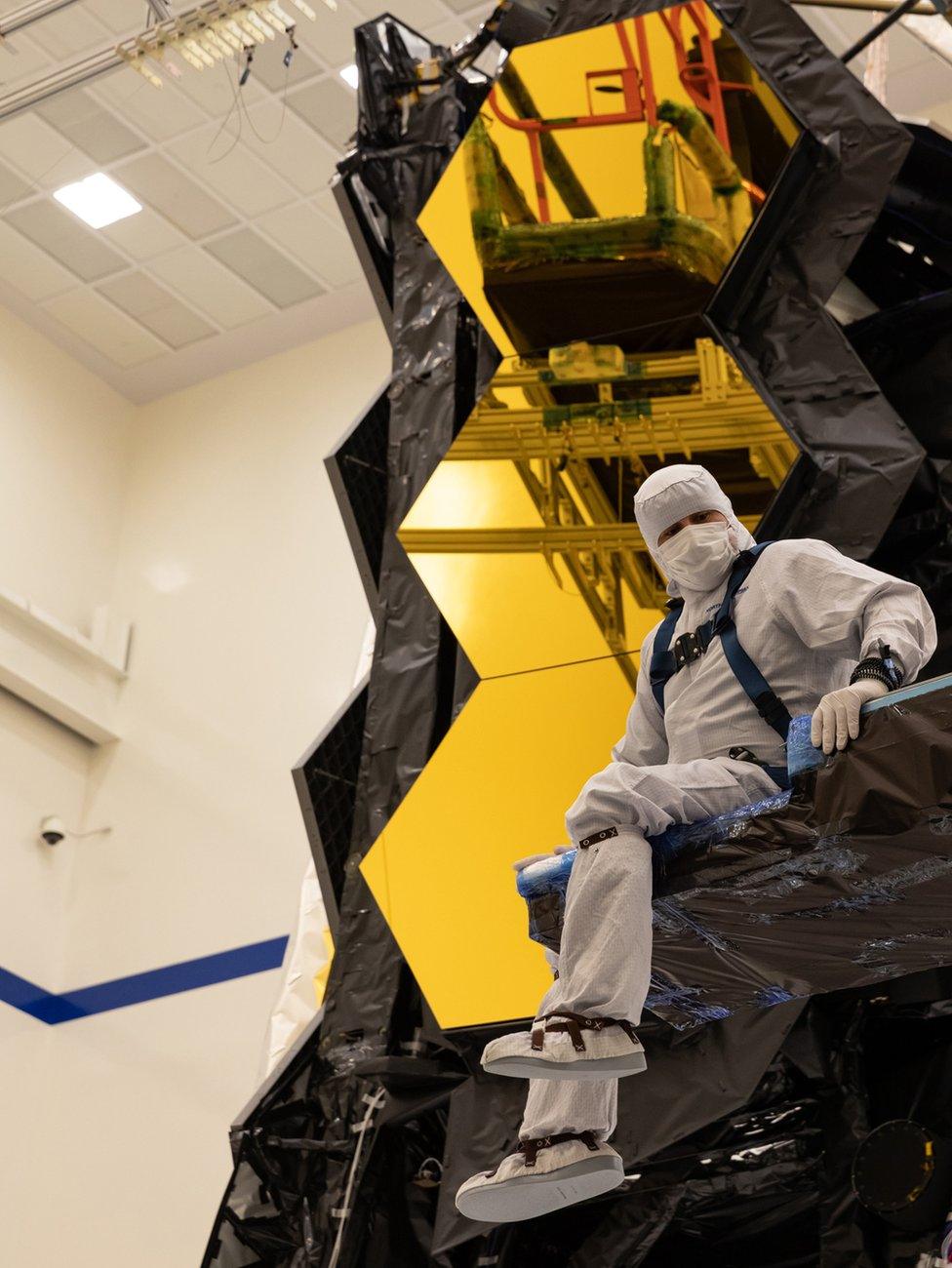James Webb Space Telescope extends secondary mirror
- Published

Artwork: The secondary mirror is in position, but the main mirror's "wings" still need to come out
Mission controllers are ticking off the final major deployments needed to set up the new James Webb Space Telescope.
Wednesday saw the observatory's secondary mirror locked into position on the end of three 8m-long booms.
It sets the stage for the all-important unpacking of Webb's giant primary mirror - the biggest reflecting surface ever sent into orbit.
At 6.5m across, this segmented feature will pick up the light from the very first stars to ignite in the cosmos.
The mirror's great size will enable it to gather the faintest signals in the most exquisite detail.
But the reflector will be useless if the light it collects cannot be directed into the telescope's instruments. This is the role of the 74cm-wide secondary mirror. Sitting out in front, it will bounce back into the heart of the observatory whatever the main mirror sees.
Watch the moment Webb moves away from its launch rocket to begin its mission
Like many of the James Webb Space Telescope's (JWST) components, the secondary mirror had to be folded to fit inside the mission's 25-December launch rocket.
It was actually flat-packed up against the main mirror, with one of its three booms given a hinge joint to make sure everything was tucked in tight.
Controllers at the Space Telescope Science Institute (STScI) in Maryland, US, sent the commands on Wednesday to drive the booms into their proper, stretched-out configuration.
This occurred in two carefully controlled movements, which ended with the tripod frame being latched and locked at 16:52 GMT to prevent any future displacement.
"Another banner day for JWST. In particular, the secondary mirror deployment folks - you guys did a heck of a job. This is unbelievable," said Bill Ochs, the US space agency's (Nasa) Webb programme manager. "We are now at a point where we're about 600,000 miles from Earth, and we actually have a telescope. Congratulations to everybody."

Next up for Webb is the main mirror itself. Its deployment should occur over the next couple of days.
At launch, this mirror looked a bit like a drop-leaf table with two edges swept back.
These "wings" must now be rotated through 90 degrees to achieve the desired 6.5m-wide concave shape.
All 18 segments have been made from the metal beryllium, which is light-weight and holds its shape at very low temperatures. The gold coating makes for near-perfect reflection in the infrared - the wavelength of light in which the pioneer stars will be seen to shine.

Taken during assembly, this image shows the fully deployed primary and secondary mirrors

Webb succeeds the Hubble Space Telescope, which, when it was launched in 1990, had a major defect in its primary mirror.
Scientists realised very quickly on receiving the first pictures that the reflector hadn't been polished correctly.
It wasn't until astronauts could take up some corrective optics that Hubble started to see the cosmos with clarity.
Webb won't have this problem.
"The segments on the primary mirror have actuators behind them that allow us to move them around, to even change their curvature," explained Lee Feinberg, the Nasa engineer in charge of Webb's mirror system.
"When first deployed in space, those segments will be misaligned. But all those actuators will take us from a misalignment measured in millimetres, all the way down to just nanometres. A factor of a million improvement."
In other words, Webb will be focused in space, a task that will begin in about a month's time.

An engineer sits in front of the main mirror "wings" that must now swing through 90 degrees
The new observatory has been designed to look deeper into the Universe than Hubble and, as a consequence, detect events occurring further back in time - more than 13.5 billion years ago.
As well as looking for the earliest stars and galaxies, scientists also expect to use Webb's more advanced capabilities to study the atmospheres of distant planets in the hope that signs of life might be detected.
Webb is currently moving out to a position 1.5 million km from Earth on the planet's "midnight" side. It's from this location that it will study the Universe.
James Webb is a joint venture between the American, European and Canadian space agencies.


